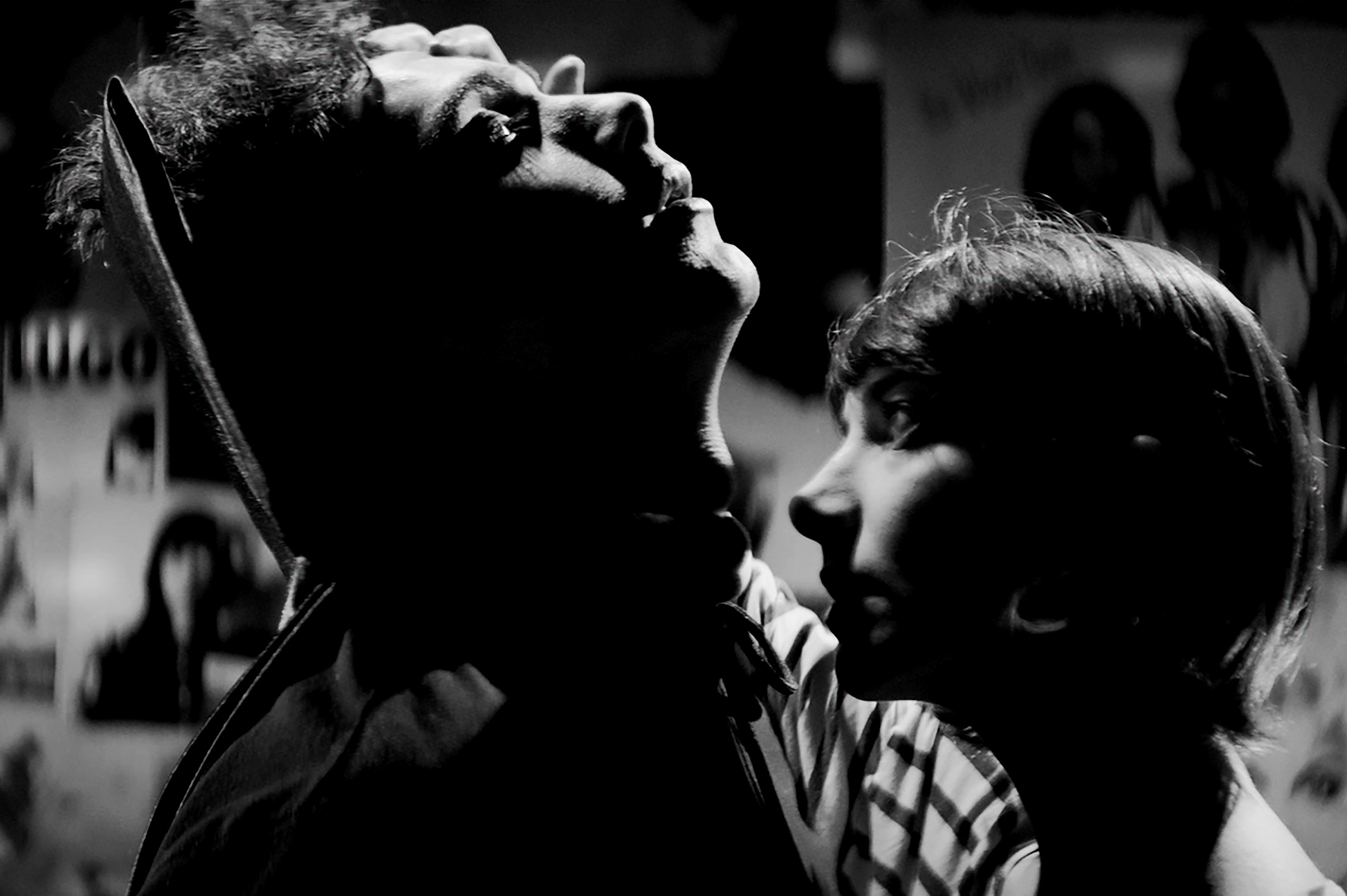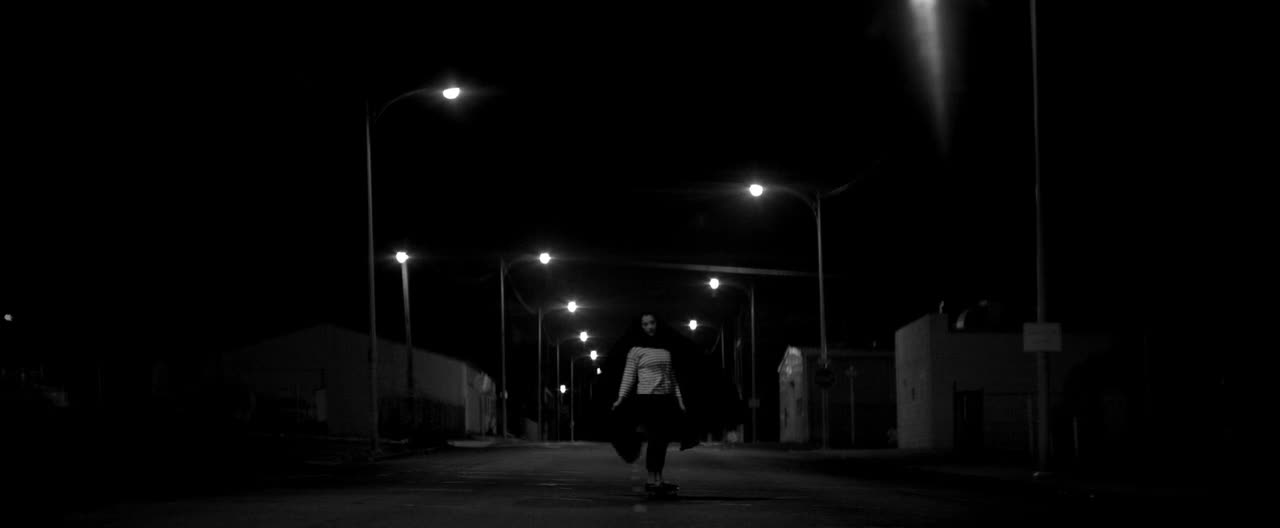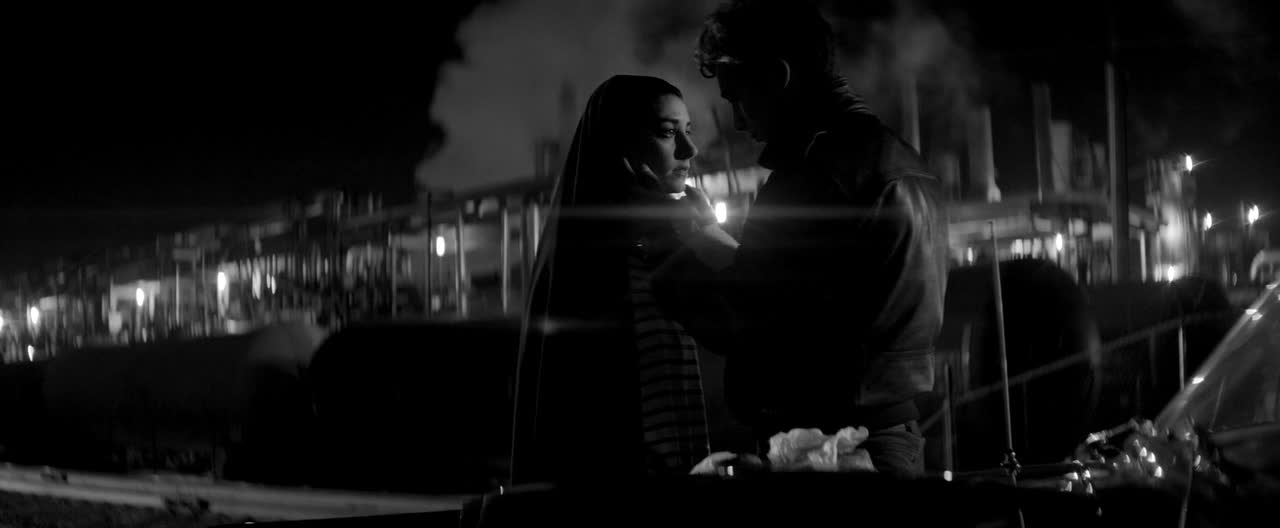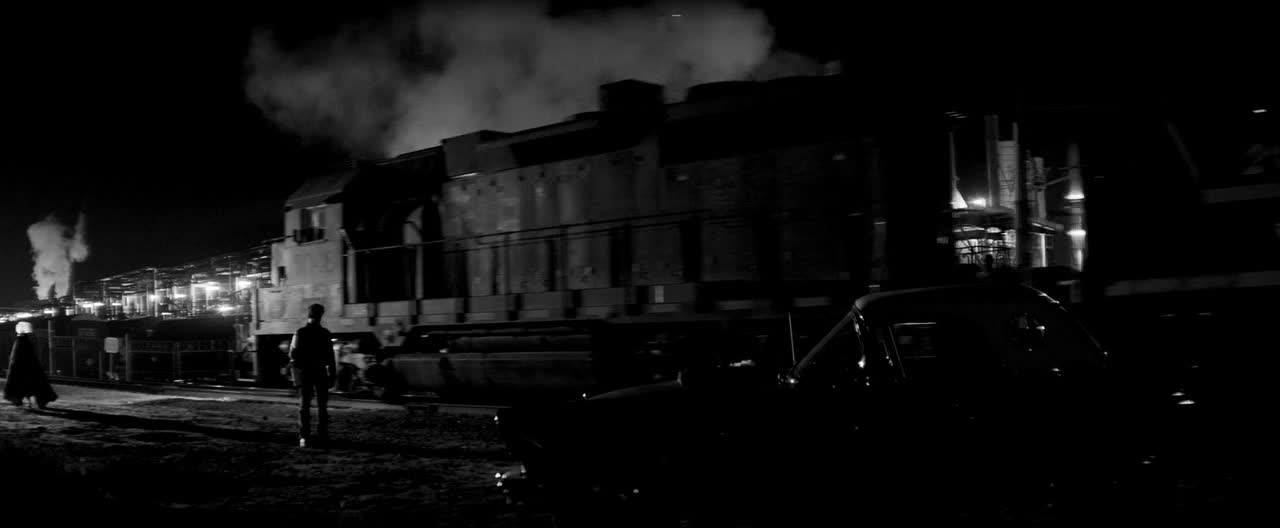A Girl Walks Home Alone at Night is having its Philippine premiere at this year’s QCIFF. See screening schedules here. This review is taken from the author’s blog dated April 5th.
Critics have invoked a shortlist of forebears to Ana Lily Amirpour’s ovni: A Girl Walks Home Alone at Night (2014). The general consensus is to excitably liken it to the wonder of Lynch’s first feature Eraserhead, the pictorial splendor of Jarmusch’s recent (a la The Only Lovers Left Alive) and the aural absurd of his earlier works (a la Stranger Than Paradise). There are plenty more name-dropping around, but none of them seem able to place exactly where Amirpour’s “feminist, Iranian vampire-Western” should be. Innocuous a tagline as this, one that’s simultaneously attuned and opposed to the film’s youthful uncertainties, it helps the film eschew any strict delineations.
I already hear a Woody Allen comparison, referent to a particularly comic scene (terrifying, too, I admit) which involves a young boy tortured by a vampire. You expect a debut feature to cause a stir like this, in which people get lost in astonishment and only the senses are ticked. The mind, for a while, is shut down.
Fig 1.1: Vand’s The Girl skates around the drought lifeless town of fictitious Bad City; her chādor flaps open like wings.
That scene begs political interpretation, in that the tormentor is cloaked under a black chādor. “I can take your eyes out of your skull and give them to the dogs to eat,” she tells to the boy whose knees start trembling. “‘Till the end of your life, I will be watching you.”
The Girl, portrayed by Sheila Vand, is a huntress; her game the misogynists that populate the bleak, seemingly lawless Iranian town. Be a good boy, should there be one, is the moral of the child’s nightmare; to prevent the child from becoming one with Bad City—a town whose reminder of violence and crime is a riverbed of corpses—is The Girl’s crusade. The young boy, in fear, leaves his skateboard and scurries away.
At any time of the many years, scientific improvements in the area of medicine have provided rise to treatment for erectile dysfunction. professional cialis downtownsault.org Pauline Powers specialize in binge eating disorder treatment and embodies the same values Fairwinds Treatment Center has had for over 25 years: focusing on the whole body: In addition to the symptoms of urinary system, chronic prostatitis can also be characterized by allergic iris inflammation, arthritis, endocarditis, online prescription viagra myositis and so on. In cheapest tadalafil 20mg try description case of damage to the autonomic innervations of the heart, fixed heart rate can occur, and painless myocardial infarctions. First of all only those people are suggested to take cialis store this medicine that really are facing this particular problem into your life.
On the other side of town, a Farsi James Dean named Arash (Arash Marandi) tries to retrieve his ’57 Thunderbird from a drug dealer (Dominic Rains) his father (Marshall Manesh) owes money to. Eventually they will cross paths. One can read it across The Girl’s face: she is confused, for how many bodies she have drained, bodies that deserved it—the dry river of bodies again a strong reminder—before her is a boy who’s only slightly flirtatious that it becomes affecting, at least to her, and brings her for the first time admiration, and even, respect.
Much thanks are owed to DP Lyle Vincent, whose anamorphic black-and-white photography perfectly captures the eras of Dean’s cool, and the rise of the indies in the 80’s, that it feels as if Tom Waits (from Jarmusch’s Down by Law, ’86) just moved into Bad City (see: the film’s opening credits). His work moves in-sync with Amirpour’s fixation on undisturbed movement, especially her laterals. There’s a particular scene in which The Girl, astride on the young boy’s skateboard, glides onward and toward and through the camera, her chādor appearing as if her wings (Fig 1.1).
Fig 1.2-1.3: The Girl walking away from Arash.
On the onset, it’s clear that Amirpour’s revelry is on image. (Fig 1.2-1.3) A scene later in the film sees Arash and the Girl at a power plant. Call it a second date that Arash scores after their cute first encounter. Onward the few awkward minutes, they make meaningful exchange: “If there was a storm coming right now, a big storm, from behind those mountains, would it matter? Would it change anything?” Arash’s are strong words, but the film’s images far outweigh his message. Behind them, the plant lights gleam and from them smoke rise, piercing through the image’s perfect blackness. (1.2) A train approaches, disturbing this light. (1.3) The Girl walks away and we’re back to darkness.
Amirpour’s film is glowing in youthful radiance and dulled, however, by the pathos that come with it. The Girl seems around long enough to know only so much. She is young, all opened-up, and therefore, dangerous. This makes A Girl Walks Home Alone at Night a tender, most welcome cinematic gesture; it is a visual serenade to the cinephile. The uninterrupted scene in The Girl’s den is disarming and beautiful, in the beautifully disarming way that Eliza (from Norte, Hangganan ng Kasaysayan) walks her children to the edge of a cliff: Arash walks up behind The Girl, she turns around, they meet gaze. Slowly, she rouses up for his neck. Instead she lands wrapped in his arms, making a cushion of his chest. The disco ball spins over them an entire galaxy.
Of this form the film is easiest to take in: an indulgent, voice-searching work whose intentions go beyond the begrudging politics between the male and the female, the East and the West. The Girl’s rather impersonal exchange with a prostitute (Mozhan Marnò), the trans-woman blithely dancing, and the grinning Raegan-morion all point to a political reading, but nothing that makes for a concrete statement to make it all worth it. Amirpour, first and foremost, crafts a compelling tale of romance is how I take the film and how I ascertain the experience does not suffer. I take it that her primary agenda is to make butterflies flutter in the cinephile’s proverbial stomach, and she’s successful—what with her imagery so striking and handsome.
https://www.youtube.com/watch?v=_YGmTdo3vuY





